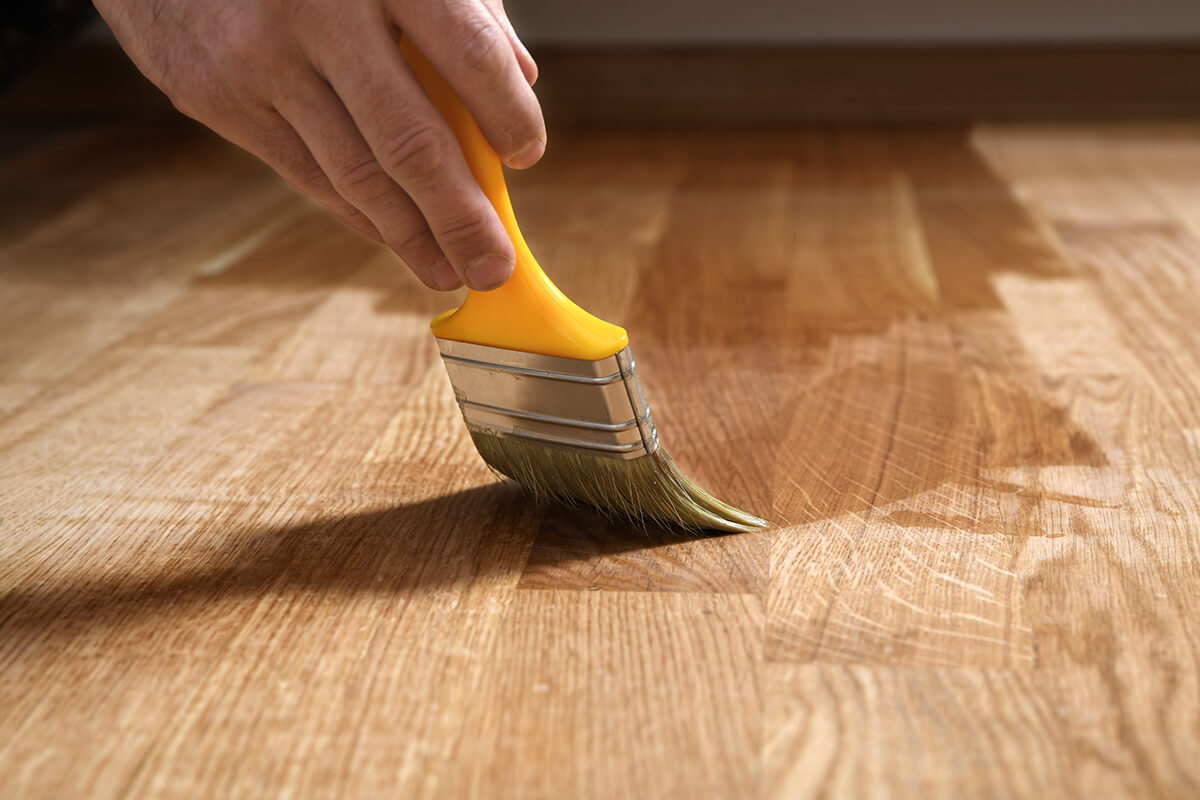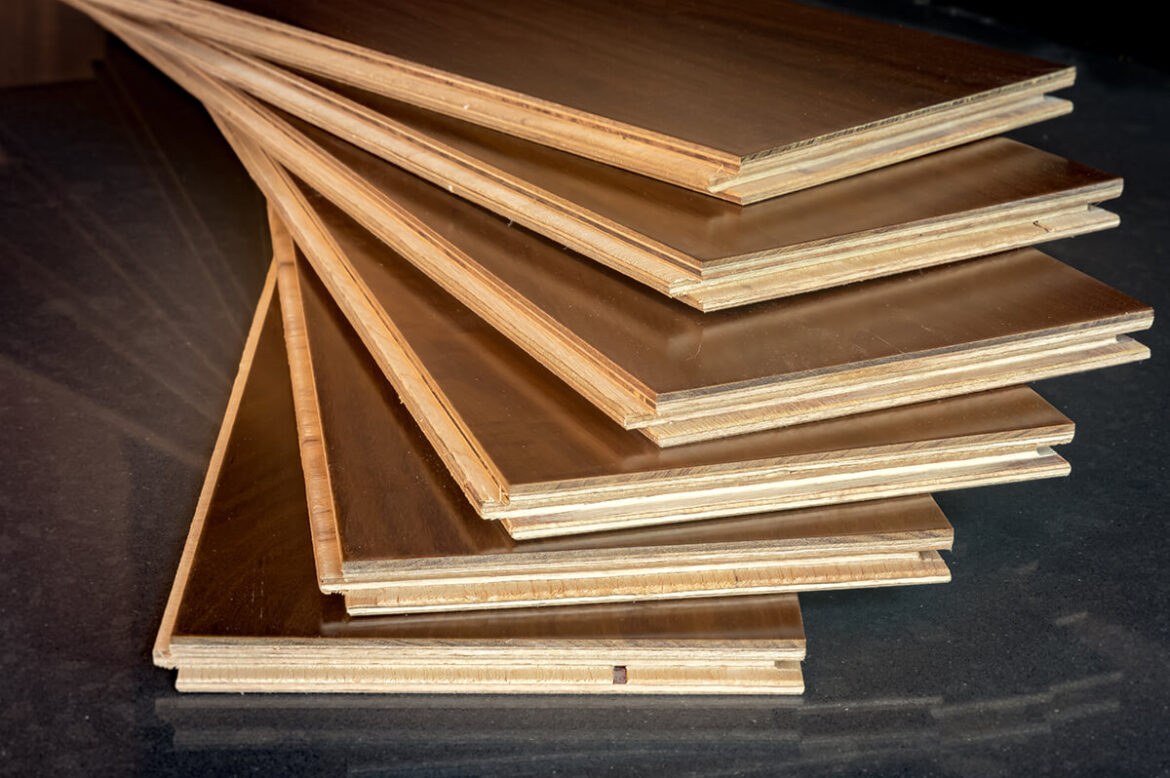The slab of wood you choose is the body of your floor, but the finish is its soul. It’s the transparent shield you walk on every day, the surface that catches the light, and the primary defence against scratches, spills, and the relentless march of time.
For engineered hardwood flooring, the finish you select dictates not just the floor’s appearance, but its long-term durability, maintenance schedule, and even the air you breathe. Choosing wrong can lead to premature wear and aesthetic regret. Choosing right transforms a simple building material into a lasting element of your home’s character.
Polyurethane: The Reigning Champion for Engineered Hardwood Flooring
Polyurethane is the most common type of floor finish in North America, and for good reason. It’s a synthetic resin that forms a durable, protective plastic-like layer on top of the wood. It doesn’t penetrate the wood so much as it builds a film over it. This category is primarily split into two distinct chemistries: oil-based and water-based.
1. Oil-Based Polyurethane
This is the traditionalist’s choice. For decades, it was the gold standard for floor finishing, known for its formidable toughness and the rich, warm hue it imparts to the wood.
The Pros:
- Exceptional Durability: Oil-based polyurethane is incredibly resistant to abrasion and scratches. Its formulation creates a slightly softer, more flexible film than its water-based counterpart, which helps it absorb impacts without cracking.
- Rich Amber Glow: This finish ambers as it cures and continues to deepen in colour with age and exposure to UV light. This effect is highly prized for the way it brings out the warmth and depth in wood species like oak and cherry, giving them a classic, inviting appearance.
- Forgiving Application: It has a longer drying time and is more self-levelling, which means brush strokes and imperfections are less likely to show. This makes it a bit more forgiving for less experienced applicators.
- Cost-Effective: Typically, the material cost for oil-based polyurethane is lower per gallon than for high-quality water-based alternatives.
The Cons:
- High VOCs and Strong Odour: The biggest drawback is its high concentration of Volatile Organic Compounds (VOCs). The off-gassing during the curing process is potent and can be hazardous without extensive ventilation. You and your pets will need to vacate the premises for several days.
- Extended Curing Time: It takes much longer to dry and cure. While it might be dry to the touch in 12-24 hours, it can take up to 30 days to fully harden. During this time, it’s vulnerable to damage, and you must be gentle with furniture and foot traffic.
- Yellowing: The same ambering effect that many love is a significant con for those who want to preserve the natural, lighter colour of woods like maple or ash. Over time, it will undeniably turn yellow.
2. Water-Based Polyurethane

The modern challenger, water-based polyurethane, has rapidly gained market share due to its environmental and health advantages. Advanced formulations have closed the durability gap, making it a powerful contender.
The Pros:
- Low VOCs and Minimal Odour: This is its signature advantage. The smell is mild and dissipates quickly, and the low VOC content means it’s a much healthier option for indoor air quality. You can often inhabit the space much sooner.
- Fast Drying and Curing: Coats can be applied just 2-4 hours apart, allowing a professional to apply multiple coats in a single day. It cures much faster than oil-based poly, often reaching near-full hardness within a week.
- Crystal Clear Finish: Water-based polyurethane dries completely clear and is non-yellowing. This is the ideal choice if you want to maintain the true, natural colour of your engineered hardwood. It’s perfect for gray-stained floors, whitewashed looks, or light woods like birch and maple.
- Safety Profile: Beyond just VOCs, the formulation of these finishes can contribute to overall home safety. According to a study, less flammable products in wood floor finishing can help reduce the risk of fatal fires, especially in older homes (Doan et al., 2006). Water-based finishes, with their lower solvent content, generally fall into this less flammable category compared to their oil-based counterparts.
The Cons:
- Higher Cost: High-quality, commercial-grade water-based polyurethanes can be significantly more expensive than oil-based versions.
- Can Appear “Cold” or “Plastic-y”: Because it doesn’t add warmth or colour, some people feel the finish can look less rich or even slightly synthetic compared to the depth provided by oil.
- Less Forgiving Application: It dries quickly, leaving little room for error. Lap marks can be an issue if you don’t maintain a wet edge, making professional application highly recommended.
The Artisan’s Choice: Hardwax Oil
Growing in popularity, especially in design-forward circles, hardwax oil finishes offer a completely different philosophy. Instead of forming a film on top of the wood, these oils penetrate the wood fibres and harden within, becoming an integral part of the floor itself.
The Pros:
- Stunning, Natural Aesthetic: Hardwax oils provide a velvety, low-sheen matte or satin finish that looks and feels like natural wood. It enhances the grain and texture, offering an organic, sophisticated appearance that polyurethane can’t replicate.
- Spot-Repairable: This is its advantage. If you get a scratch or a deep scuff, you don’t need to refinish the entire room. You can lightly sand the affected area and re-apply a small amount of the oil, seamlessly blending it with the surrounding floor. This is a game-changer for homes with pets and children.
- Zero to Low VOCs: Most hardwax oils are derived from natural plant oils (like sunflower or soy) and waxes (like carnauba or candelilla), making them an exceptionally eco-friendly and healthy choice.
- Feels Better Underfoot: Because there is no plastic film between your feet and the floor, walking on a hardwax oiled floor feels more direct and natural.
The Cons:
- Lower Initial Durability: It does not provide the same level of up-front resistance to scratches and scuffs as a thick film of polyurethane. The wood itself is more exposed.
- Requires More Regular Maintenance: This is not a “set it and forget it” finish. The floor will need to be cleaned with a specific soap designed for oiled floors and periodically refreshed with a maintenance oil (perhaps every 1-3 years, depending on traffic) to keep it nourished and protected.
- Vulnerable to Water Spots: Spills, especially water, must be wiped up promptly. If left to sit, water can penetrate the finish and leave a mark on the wood itself.
The Unseen Guardian: Aluminum Oxide (Factory-Applied)
When you buy pre-finished engineered hardwood, you’re most likely getting an aluminum oxide finish. This is a factory-applied, UV-cured finish that contains microscopic particles of aluminum oxide (the same substance found in sandpaper) to create a surface of phenomenal hardness.
The Pros:
- Supreme Durability: This is the toughest residential finish available. It’s incredibly resistant to scratches, scuffs, and fading from sunlight. The multiple layers are applied in a controlled factory environment and cured instantly with UV light, creating a harder shell than any site-applied finish can achieve.
- No On-Site Mess or Curing: The boards arrive ready to install. There’s no sanding dust, no hazardous fumes, and no waiting for the finish to cure. You can walk on your floors the moment they are installed.
- Consistency: Every board has a perfectly even finish, free from the potential errors of a site-applied application like drips, bubbles, or uneven sheen. This consistency is a major draw for large projects and homeowners who value predictability. The market for pre-finished engineered flooring in Toronto, for example, is robust because homeowners need floors that can withstand heavy winter boots and tracked-in salt without immediate damage.
The Cons:
- Impossible to Spot-Repair: While incredibly tough, if you do manage to get a deep scratch that penetrates the finish, you cannot spot-fix it. A light scratch may not be noticeable, but a deep gouge is permanent.
- Refinishing is a Major Undertaking: The only way to fix significant damage or wear is to sand the entire floor down to raw wood and start over. This process is far more difficult and expensive than sanding a standard polyurethane finish because of the extreme hardness of the aluminum oxide layers. It requires specialized equipment and expertise.
- Can Look Artificial: The very perfection and thickness of the finish can sometimes create a barrier that makes the wood look less natural or “plasticky” to some observers, especially in higher gloss levels.

Your Floor, Your Finish, Your Final Decision
Your lifestyle is the ultimate tiebreaker. A bustling family with large dogs and active kids might find the near-invincible nature of a factory-applied aluminum oxide finish to be the most practical choice. A design-conscious couple in a quiet apartment might gravitate toward the sophisticated, repairable elegance of hardwax oil.
Someone renovating a classic home and seeking warmth and depth might choose oil-based polyurethane, while a minimalist with light maple floors will need the crystal-clear protection of a water-based system.
For professional guidance on selecting the perfect engineered hardwood flooring in Toronto, contact the specialists at Capital Hardwood Flooring at (416) 536-2200. Choose with care, and it will reward you with beauty and resilience for years to come.
